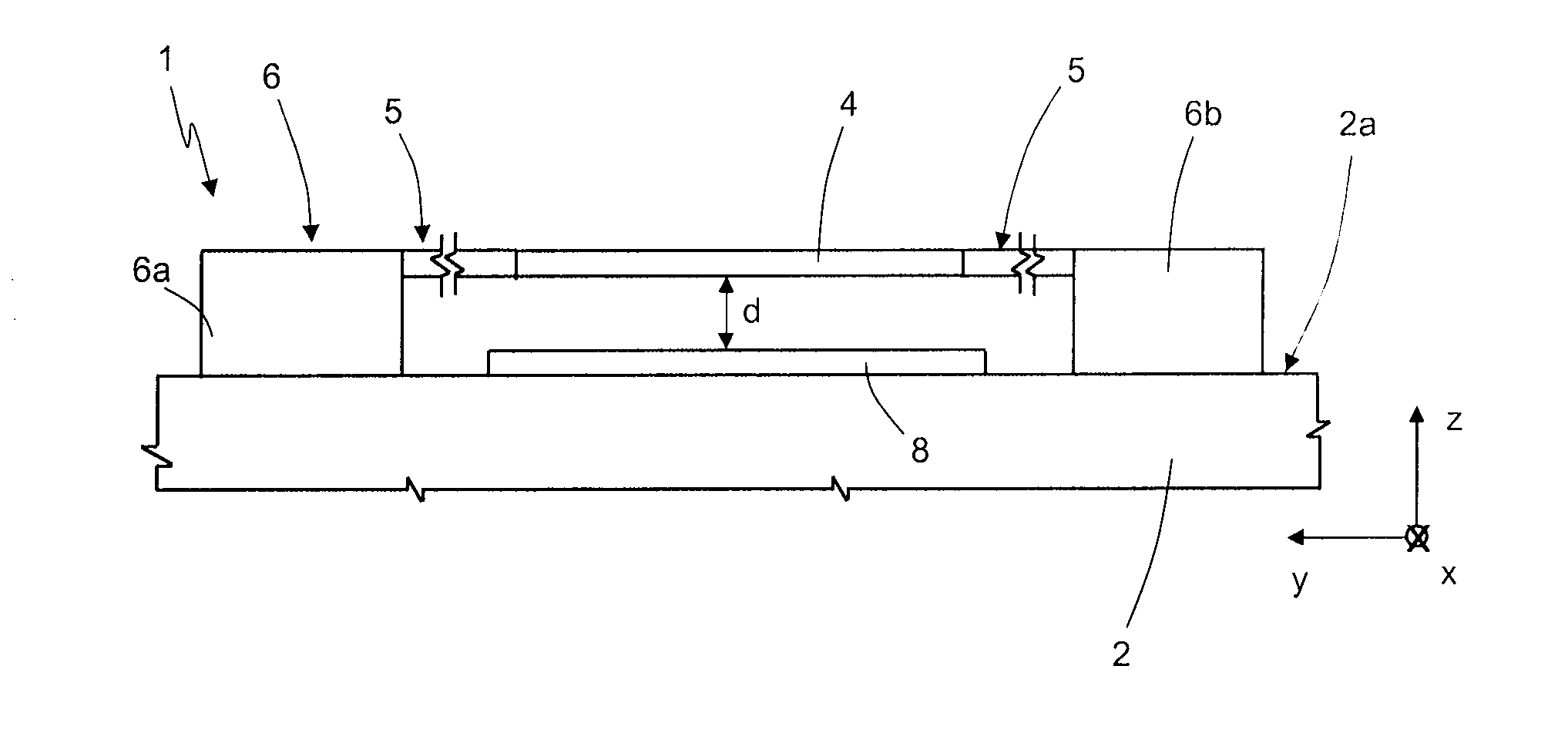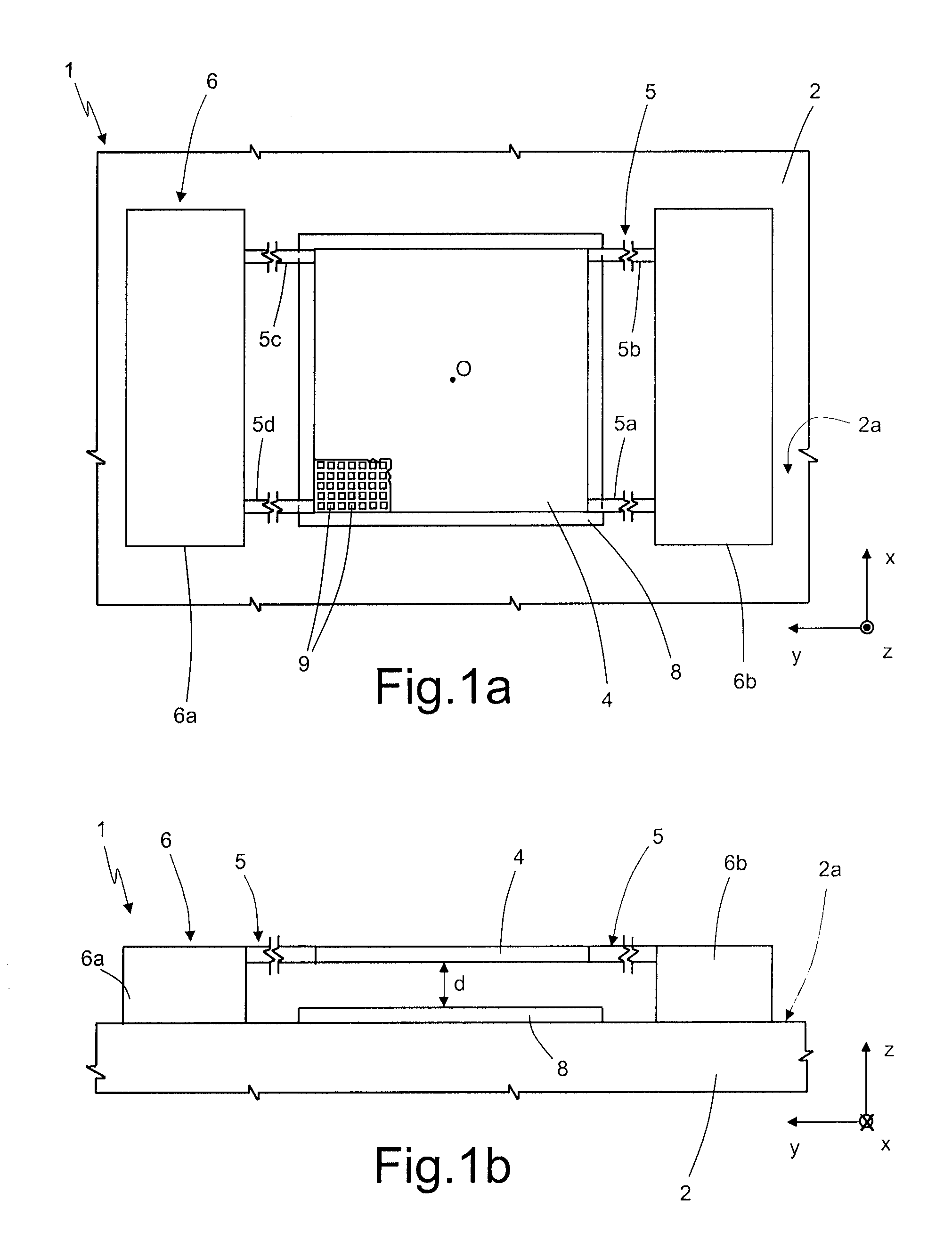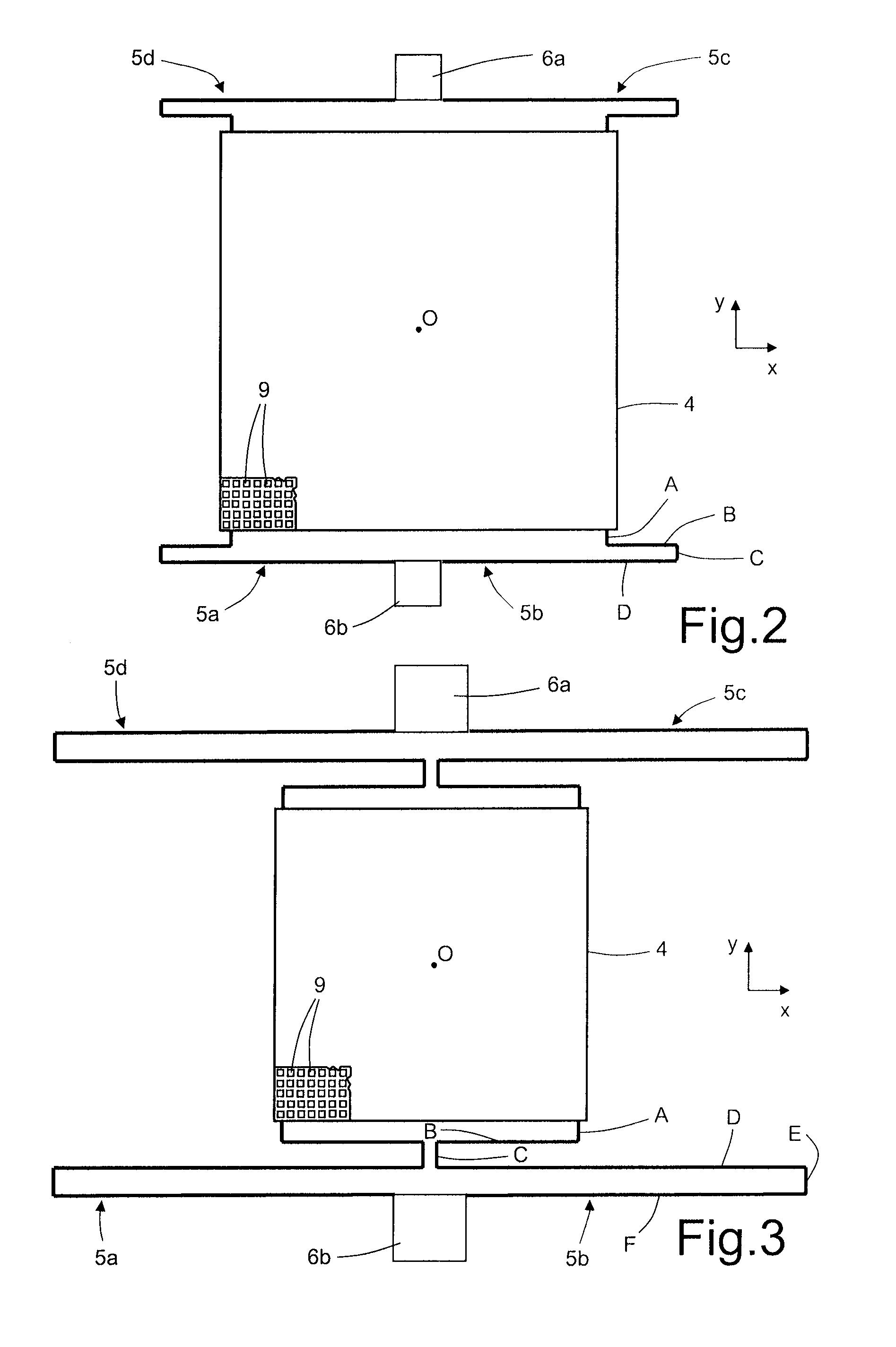Microelectromechanical resonant structure having improved electrical characteristics
a micro-electromechanical and electrical characteristics technology, applied in the direction of electrical apparatus, device details, push-pulse automatic control, etc., can solve the problems of counterbalancing advantages and inability to regulate the operating frequency of devices, and achieve the reduction of energy consumption, motion resistance, and motion resistance
- Summary
- Abstract
- Description
- Claims
- Application Information
AI Technical Summary
Benefits of technology
Problems solved by technology
Method used
Image
Examples
Embodiment Construction
[0024]As will be clarified in detail in what follows, one aspect of the present disclosure envisages providing a micromechanical resonant structure of a vertical type, in which the mobile mass is able to oscillate in resonance in a direction transverse to the top surface of the substrate, instead of parallel to the same substrate. The mobile mass is capacitively coupled, in parallel-plate configuration, to at least one fixed electrode set on the substrate in such a way that the characteristic gap of the resonant structure is to be determined by the height of the layer of air between the mobile mass and the fixed electrode (the thickness of this vertical gap can thus be easily regulated and reduced in value, as described hereinafter, by means of etching and removal of a region of sacrificial material).
[0025]As illustrated schematically in FIGS. 1a and 1b, a MEMS resonant structure, designated as a whole by 1, has a substrate 2 of semiconductor material, in particular silicon, having ...
PUM
 Login to View More
Login to View More Abstract
Description
Claims
Application Information
 Login to View More
Login to View More - R&D
- Intellectual Property
- Life Sciences
- Materials
- Tech Scout
- Unparalleled Data Quality
- Higher Quality Content
- 60% Fewer Hallucinations
Browse by: Latest US Patents, China's latest patents, Technical Efficacy Thesaurus, Application Domain, Technology Topic, Popular Technical Reports.
© 2025 PatSnap. All rights reserved.Legal|Privacy policy|Modern Slavery Act Transparency Statement|Sitemap|About US| Contact US: help@patsnap.com



